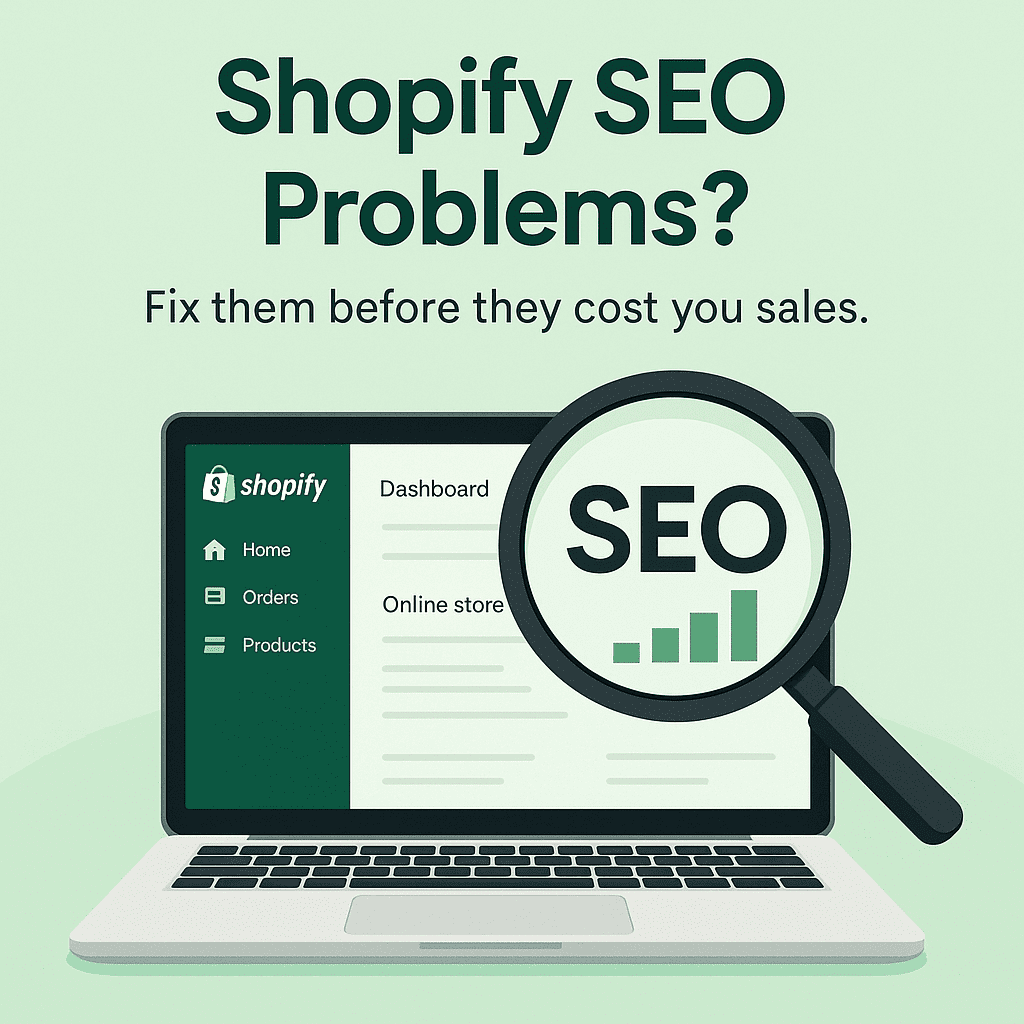Shopify Hydrogen – The Future of Custom Storefronts [Review + Insights]
![Shopify Hydrogen – The Future of Custom Storefronts [Review + Insights]](https://ecommercesmalltask.com/storage/blogs/621027951754564801.png.pagespeed.ce.0TFn07Tiwx.png)
Introduction to Shopify Hydrogen
What is Shopify Hydrogen?
Shopify Hydrogen is a React-based front-end framework designed specifically for building custom storefronts on Shopify. Introduced by Shopify to empower developers with more flexibility and speed, Hydrogen leverages server-side rendering (SSR) and powerful development tools to allow brands to deliver lightning-fast, personalized shopping experiences.
Hydrogen breaks free from the traditional Liquid template system, making it easier to create dynamic, app-like storefronts that rival top-tier eCommerce platforms.
Why Shopify Created Hydrogen
Shopify built Hydrogen in response to the growing demand for headless commerce, where developers want control over the front-end while still enjoying Shopify’s powerful commerce engine. With consumers expecting rich, fast, and personalized online experiences, Shopify needed a native solution that could scale with those expectations. Hydrogen is that solution — fully optimized for performance, Store's SEO, and developer experience.
How Hydrogen Fits into Shopify’s Ecosystem
Comparison with Shopify Liquid
While Liquid is still widely used and ideal for standard storefronts, Hydrogen is meant for developers who need greater customization. Liquid is templating-based, and good for merchants who don’t need much flexibility. Hydrogen, however, is JavaScript-based and allows for total front-end control, making it better suited for brands with unique UI/UX requirements.
Integration with Shopify Oxygen
Hydrogen was designed to work hand-in-hand with Shopify Oxygen, Shopify’s globally distributed hosting platform. While Hydrogen handles the front-end development, Oxygen ensures those apps are securely deployed and scaled worldwide, without the need for external hosting.
Key Features of Shopify Hydrogen
React-Based Architecture
Hydrogen is built with React, one of the most popular JavaScript frameworks in the world. This means developers can leverage their existing React skills to build scalable, maintainable, and powerful storefronts using components, hooks, and state management.
Built-In Routing and Server-Side Rendering
Hydrogen comes with built-in file-based routing and SSR support out of the box. Server-side rendering improves performance and SEO, as pages are rendered before reaching the browser, reducing load times and improving crawlability for search engines.
TailwindCSS Integration
Hydrogen includes built-in support for TailwindCSS, allowing developers to quickly prototype and style their stores with utility-first classes. This speeds up development and encourages clean, consistent design.
Performance Improvements
Thanks to SSR, React hydration, and dynamic loading, Hydrogen offers blazing-fast load times, which are critical for reducing bounce rates and improving conversions.
Flexibility for Developers
Whether you want to design a minimalistic storefront or build a content-rich shopping experience, Hydrogen allows developers to tailor every aspect of the front-end while still relying on Shopify’s robust backend.
Better Developer Experience
With features like hot module reloading, TypeScript support, and developer-friendly tooling, Hydrogen is designed to keep developers productive and happy.
Shopify Hydrogen vs Other Headless Solutions
Hydrogen vs Next.js
While Next.js is a powerful general-purpose React framework, Hydrogen is tailored for Shopify. Hydrogen simplifies data fetching from Shopify’s Storefront API and includes built-in commerce components, making it faster to get started for eCommerce-specific use cases.
Hydrogen vs Gatsby
Gatsby is known for static site generation (SSG), which is great for blogs or content-heavy sites. However, for dynamic eCommerce stores needing real-time updates (like inventory, prices), Hydrogen’s SSR approach provides a better balance of performance and flexibility.
Setting Up a Hydrogen Project
Installation Requirements
To begin with Hydrogen, you’ll need:
-
Node.js (v18+)
-
npm or Yarn
-
Git
Step-by-Step Guide to Launch
-
Install Shopify CLI
-
Run:
shopify create hydrogen -
Choose your template
-
Start the development server
-
Customize your storefront
GitHub and CLI Tools
Shopify’s official GitHub repo and CLI tools make it easy to set up, test, and deploy Hydrogen projects efficiently. Developers also gain access to starter templates and live preview tools.
Creating Custom Storefronts with Hydrogen
Building Product Pages
Hydrogen allows you to dynamically render product details, including price, variants, and availability using prebuilt components like
Managing Dynamic Routes
With file-based routing, you can create dynamic paths like /products/[handle].jsx for each product, which automatically handles Shopify’s product handles.
API Integration
Hydrogen uses Shopify’s Storefront API, enabling real-time data fetching for products, collections, carts, and more — all without needing additional backends.
Shopify Oxygen – Deploying Hydrogen Apps
What is Shopify Oxygen?
Oxygen is Shopify’s globally distributed hosting infrastructure. It lets you deploy Hydrogen storefronts directly from your GitHub repo, with zero configuration and maximum performance.
CI/CD with Oxygen
Shopify integrates CI/CD pipelines into Oxygen, so every commit automatically triggers a new build and deploy — making the entire development process smoother and faster.
Pros and Cons of Shopify Hydrogen
| Pros | Cons |
|---|---|
| Fast performance with SSR | Learning curve for non-React devs |
| Full control over UI/UX | Requires Oxygen for deployment |
| Built-in Shopify API integration | Less suitable for beginners |
| SEO-ready out of the box | Smaller community vs Next.js |
Real-World Examples and Case Studies
Brands Using Hydrogen Today
-
Allbirds: Known for their performance-driven storefront
-
Brooklinen: Leveraging personalization with SSR
-
Shopify Editions Sites: Built using Hydrogen to showcase features
Performance Metrics & Outcomes
Hydrogen-powered stores have seen:
-
30–50% improvements in load times
-
Increased engagement rates
-
Reduced bounce rates across mobile
SEO Considerations in Hydrogen Storefronts
Hydrogen’s SSR nature gives it an edge for SEO. You can:
-
Set meta titles and descriptions dynamically
-
Use structured data (JSON-LD) for product rich snippets
-
Render pages fast, improving Core Web Vitals
Security and Scalability with Hydrogen
Hydrogen is secure by design and leverages Shopify’s OAuth and access control features. Paired with Oxygen, it provides:
-
Enterprise-grade security
-
Automatic scaling to handle global traffic
-
Edge computing for faster local loads
Developer Tools and Resources
-
Official Hydrogen Docs
-
GitHub Repository: Shopify Hydrogen GitHub
-
Tutorials and starter kits via Shopify CLI
Shopify Hydrogen Best Practices
-
Use reusable components for scalability
-
Optimize images using Shopify’s CDN
-
Leverage server-side data fetching with
loaderfunctions -
Keep layouts clean and responsive with TailwindCSS
Roadmap: What’s Coming for Hydrogen?
-
Expanded CMS integrations
-
More prebuilt components (cart, checkout)
-
Deeper analytics and testing integrations
-
Community contributions to core features
Frequently Asked Questions (FAQs)
Q1: Is Shopify Hydrogen free to use?
Yes, it’s open-source and available through the Shopify CLI and GitHub.Q2: Can beginners use Hydrogen?
While it’s geared toward developers, beginners with React knowledge can start learning quickly.Q3: Is Hydrogen only for large brands?
No. It’s ideal for any merchant looking for a customized storefront.Q4: How is Hydrogen different from a traditional Shopify theme?
Hydrogen provides full front-end control using JavaScript, unlike themes that rely on Liquid.Q5: Can I use third-party APIs with Hydrogen?
Absolutely. You can integrate with any API just like in any React application.
Q6: Do I need to use Shopify Oxygen to deploy Hydrogen?
It’s recommended, but not mandatory. You can also deploy Hydrogen apps using Vercel or Netlify.Conclusion: Is Shopify Hydrogen Right for You?
If you’re a developer or a brand that demands complete creative control, high performance, and a tailored storefront experience, then Shopify Hydrogen is worth exploring. Backed by Shopify’s infrastructure, it’s a game-changer for modern commerce in 2025 and beyond.




